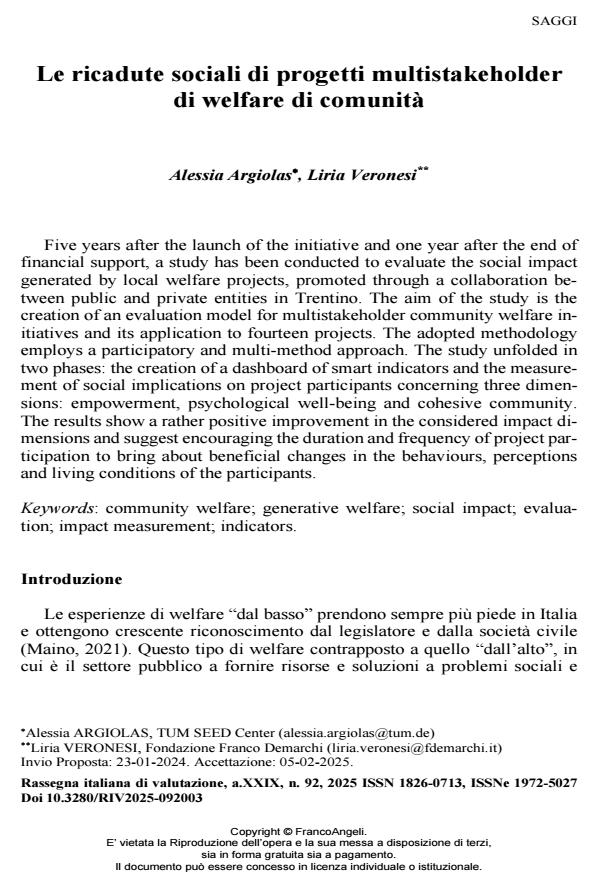Le ricadute sociali di progetti multistakeholder di welfare di comunità
Titolo Rivista RIV Rassegna Italiana di Valutazione
Autori/Curatori Alessia Argiolas, Liria Veronesi
Anno di pubblicazione 2025 Fascicolo 2025/92
Lingua Italiano Numero pagine 23 P. 34-56 Dimensione file 904 KB
DOI 10.3280/RIV2025-092003
Il DOI è il codice a barre della proprietà intellettuale: per saperne di più
clicca qui
Qui sotto puoi vedere in anteprima la prima pagina di questo articolo.
Se questo articolo ti interessa, lo puoi acquistare (e scaricare in formato pdf) seguendo le facili indicazioni per acquistare il download credit. Acquista Download Credits per scaricare questo Articolo in formato PDF

FrancoAngeli è membro della Publishers International Linking Association, Inc (PILA)associazione indipendente e non profit per facilitare (attraverso i servizi tecnologici implementati da CrossRef.org) l’accesso degli studiosi ai contenuti digitali nelle pubblicazioni professionali e scientifiche
Five years after the launch of the initiative and one year after the end of financial support, a study has been conducted to evaluate the social impact generated by local welfare projects, promoted through a collaboration between public and private entities in Trentino. The aim of the study is the creation of an evaluation model for multistakeholder community welfare initiatives and its application to fourteen projects. The adopted methodology employs a participatory and multi-method approach. The study unfolded in two phases: the creation of a dashboard of smart indicators and the measurement of social implications on project participants concerning three dimensions: empowerment, psychological well-being and cohesive community. The results show a rather positive improvement in the considered impact dimensions and suggest encouraging the duration and frequency of project participation to bring about beneficial changes in the behaviours, perceptions and living conditions of the participants.
Parole chiave:community welfare; generative welfare; social impact; evaluation; impact measurement; indicators.
Alessia Argiolas, Liria Veronesi, Le ricadute sociali di progetti multistakeholder di welfare di comunità in "RIV Rassegna Italiana di Valutazione" 92/2025, pp 34-56, DOI: 10.3280/RIV2025-092003